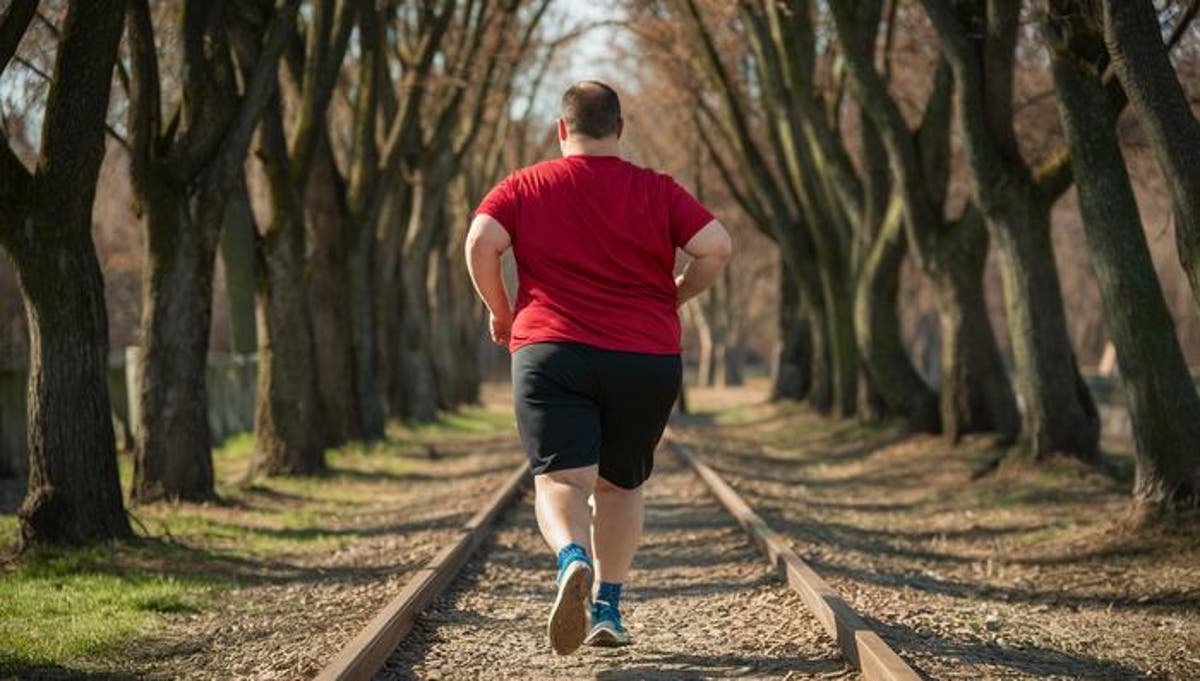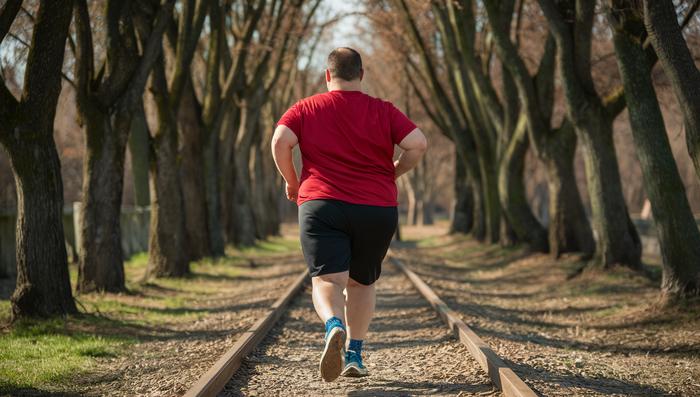Fitness
Ollie Thompson: 5 ways to manage your exercise routine in sunny August

Our fitness expert Ollie Thompson suggests ways to maintain your exercise routine as the temperatures rise.
As the temperatures rise in August, maintaining your exercise routine can be challenging, especially for those of us not typically exercising in a cool, air-conditioned gym. High temperatures and intense sunshine can make outdoor activities daunting; however, with a few smart adjustments, you can stay active and healthy throughout the hottest month of the year. Here are five tips to help you manage your exercise routine in sunny August.

1. Exercise in the morning or evening
One of the simplest ways to beat the heat is to schedule your workouts for the cooler parts of the day. Early mornings and late evenings are generally the best times to exercise outdoors in August, especially if you’re a runner. The temperatures are lower, and the sun’s rays are less intense, reducing your risk of heat-related issues such as dehydration and heat stroke. Plus, these times often offer a peaceful, quiet environment, which can make your workout more enjoyable and less stressful.
2. Stay hydrated
Hydration is crucial, especially when exercising in the summer heat. Water helps regulate your body temperature and keeps your muscles and joints working efficiently. Make it a habit to drink water before, during, and after your workouts. For longer sessions, consider drinks with electrolytes to replace the minerals lost through sweat. Soluble hydration tablets or powder can be useful in this instance. For some people, reducing coffee intake could also be a sensible strategy, as a high caffeine intake of 400mg+ can contribute to dehydration, particularly if you’re not drinking enough water throughout the day.
3. Wear light and breathable clothing
Choosing the right workout gear can make a significant difference in your comfort and performance. Opt for light-coloured, loose-fitting clothing made from breathable fabrics like cotton. This will help keep you cool by allowing sweat to evaporate more easily. Don’t forget to wear a hat, sunglasses, and suncream to protect your face and eyes from the sun.
4. Exercise in a well air-conditioned gym
When the outdoor heat becomes unbearable, taking your workouts indoors can be a great alternative. Exercising in a well air-conditioned gym allows you to stay active and perform at a high level without worrying about the temperature. Gyms also offer a variety of equipment and classes, providing opportunities to mix up your routine and explore a different style of training. If you prefer group activities, many gyms offer classes like yoga, Pilates, or spin that can keep you cool while you work up a sweat.
Additionally, the summer months are often the quietest months for commercial gyms as there are fewer students around and more people are away on their summer holidays. For people inexperienced within a gym setting, it’s the perfect time to dip your toe in without the worry of it being overcrowded.
5. Listen to your body
Finally, it’s essential to pay attention to how your body feels during your workouts, especially in extreme heat. Symptoms like dizziness, nausea, excessive sweating, and fatigue can be signs of heat exhaustion. If you experience any of these, stop exercising immediately, move to a cooler place, and hydrate. It’s okay to modify or shorten your workouts during very hot days. The goal is to stay active and healthy, not to push yourself to the point of harm.

By following these five tips, you can continue to enjoy your exercise routine throughout the warmer weather that August has to offer. Remember, staying active is crucial for maintaining your health and well-being, but it’s equally important to do so safely and smartly.
See you again in September, where I’ll be breaking down how to exercise to develop a robust, pain-free body.
Ollie specialises in helping career-focused professionals get into great shape, build long-term health and perform better in their work. Ollie works across Cambridge and London and offers both in-person and virtual personal training. Visit welltolead.com and follow Ollie on Instagram @olliethompsonhealth for more.

Fitness
How much should you exercise to actually lose weight?

Two and a half hours of physical exercise per week may be essential for achieving any significant reduction in body weight, a new review of studies has found.
The review, published in the journal JAMA Network Open on Thursday, analysed previously conducted clinical trials probing the effect of exercise on weight loss.
It found that doing about 30 minutes of exercise a week was linked to only a modest reduction in body weight, body fat measures, and waist circumference among adults with obesity.
However, aerobic exercise exceeding 150 minutes per week, at moderate intensity or greater, was more likely to achieve clinically important reductions in weight-loss parameters.

Aerobic exercise is any type of physical activity that raises a person’s heart rate and gets them moving and sweating for a sustained period of time.
Previous studies have shown this type of cardio exercise provides a range of benefits when coupled with a healthy diet, enabling people to think more clearly, and even protect against cognitive decline with age.
Some previous studies have estimated the optimal minimum period of exercise at between 30 and 45 minutes.
As little as 30 minutes of aerobic exercise has been linked to significantly better performance on cognitive quizzes.
One study showed that about 30 minutes of treadmill walking for 10 consecutive days may significantly reduce depression.
But the exact amount of optimal exercise needed for weight loss has been unclear.
Health guidelines suggest that at least 150 minutes a week of aerobic exercise at moderate intensity is key to achieving meaningful weight loss of about 2 to 3kg. Some studies suggest a moderate intensity physical activity of about 225 to 420 minutes per week is required for weight loss of 5 to 7.5 kg.
The new study assessed data from over 100 clinical trials examining the effect of exercise over a duration of at least eight weeks on overweight or obese adults.
Researchers found that 30 minutes of aerobic exercise per week may enable adults who are overweight or have obesity to “slightly reduce” body weight.
However, they found the “greatest, clinically important” improvement from aerobic exercise of over 150 minutes per week.
“Aerobic training at least 150 minutes per week may be needed to achieve important reductions in waist circumference and body fat,” they said in the review.
“Longer durations of aerobic exercise may be associated with more beneficial weight or waist circumference outcomes.”
Fitness
Why you should do strength training at 70: try these exercises

A decline in health and fitness isn’t inevitable once you cross into your seventies. Just take look at the recent snaps of Pierce Brosnan — age 70 — shirt off in the wilds of Yellowstone National Park. Or think of Angela Rippon, 79, high-kicking it on Strictly; Helen Mirren, 78, on the red carpet; or the verve of Bruce Springsteen, playing a three-hour set in Hyde Park, London, in the summer at the age of 73. These are just four examples of a host of septuagenarians and octogenarians who have demonstrated that vitality is possible at any age — if you’re prepared to work for it.
Skeletal muscle mass and strength decline more rapidly as we age and can affect physical performance, but this
Fitness
Running heel taps to warm up for your workout – Today's Tip

- Today’s Tip
Fit this workout into your day!
Thursday, December 26, 2024 12:34PM
Shoshana shows us how running heel taps can quickly bring your heart rate up!
PHILADELPHIA (WPVI) — Shoshana shows us how running heel taps can quickly bring your heart rate up!
WATCH PREVIOUS FITNESS TIPS:
Work your back muscles – Today’s Tip
Squat, walkout pushup – Today’s Tip
Crunch with twist – Today’s Tip
Plank rainbow rotation – Today’s Tip
Squat & lateral lift – Today’s Tip
Reverse lunge – Today’s Tip
Fly, row and press – Today’s Tip
Ab exercise – Today’s Tip
Arm press – Today’s Tip
Leg lift – Today’s Tip
Copyright © 2024 WPVI-TV. All Rights Reserved.
Related Topics
- HEALTH & FITNESS
- TODAY’S TIP
- 6ABC FITNESS TIP
- FEEL GOOD
- EXERCISE
-
/cdn.vox-cdn.com/uploads/chorus_asset/file/24924653/236780_Google_AntiTrust_Trial_Custom_Art_CVirginia__0003_1.png)
/cdn.vox-cdn.com/uploads/chorus_asset/file/24924653/236780_Google_AntiTrust_Trial_Custom_Art_CVirginia__0003_1.png) Technology6 days ago
Technology6 days agoGoogle’s counteroffer to the government trying to break it up is unbundling Android apps
-

 News7 days ago
News7 days agoNovo Nordisk shares tumble as weight-loss drug trial data disappoints
-

 Politics7 days ago
Politics7 days agoIllegal immigrant sexually abused child in the U.S. after being removed from the country five times
-

 Entertainment1 week ago
Entertainment1 week ago'It's a little holiday gift': Inside the Weeknd's free Santa Monica show for his biggest fans
-

 Lifestyle1 week ago
Lifestyle1 week agoThink you can't dance? Get up and try these tips in our comic. We dare you!
-
/cdn.vox-cdn.com/uploads/chorus_asset/file/25672934/Metaphor_Key_Art_Horizontal.png)
/cdn.vox-cdn.com/uploads/chorus_asset/file/25672934/Metaphor_Key_Art_Horizontal.png) Technology2 days ago
Technology2 days agoThere’s a reason Metaphor: ReFantanzio’s battle music sounds as cool as it does
-

 Technology1 week ago
Technology1 week agoFox News AI Newsletter: OpenAI responds to Elon Musk's lawsuit
-

 News4 days ago
News4 days agoFrance’s new premier selects Eric Lombard as finance minister
















